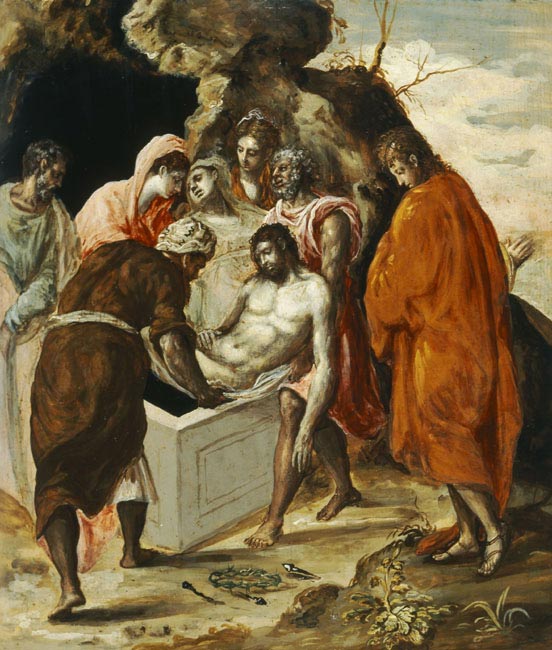| The Entombment of Christ | |
|---|---|
 |
|
| Artist | El Greco |
| Year | c.1570 |
| Medium | Oil, tempera |
| Location | National Art Gallery and Alexander Soutzos Museum |
| Dimensions | 51.5 x 42.9 cm |
| Famous Paintings by El Greco | |
| The Disrobing of Christ, 1577–1579 | |
| Opening of the Fifth Seal, 1608-1614 | |
| Dormition of the Virgin, 1565-1566 | |
| The Burial of the Count of Orgaz, 1586 | |
| View of Toledo, 1596-1600 | |
| The Adoration of the Shepherds, 1612–14 | |
| Christ Healing the Blind, c. 1570 | |
| The Entombment of Christ, c.1570 | |
| St. Martin and the Beggar, 1597-1599 | |
| Complete Works |
Now housed in the National Art Gallery and Alexander Soutzos Museum, The Entombment of Christ by El Greco takes up a popular subject for Renaissance painters. The painting shows the family and friends of Jesus depositing his body in the tomb of Joseph of Arimathea after his Crucifixion.
Begun in 1568 and completed around 1570, this oil and tempera painting is one of the Spanish/Greek master’s early works and only hints at the greatness that was to come. We see the unfolding of Mannerism, that technique that exaggerates the physical form to convey the extremities of emotion.
A Work of Passionate Grief
However, passion pervades even in this early work. The action takes place in front of the cave where the tomb is to be placed, and we see its entrance as black and forbidding as a maw. Overcome by grief, the Virgin Mary faints into the arms of her kinswomen. The Apostle John, his bright orange robe offering one of the few splashes of bright color, seems stunned. The weeds that sprout on the otherwise stony ground echo the crown of thorns and the nails that have been removed and laid on the ground, and what trees we see are barren.